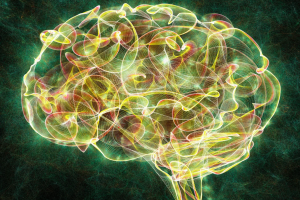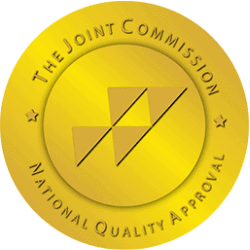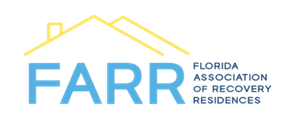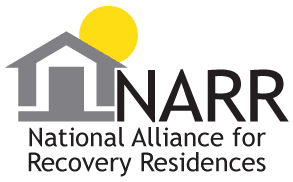Drug Experimentation Indicators Spotted in Brain Differences of Children

One of the salient features of children who exhibit a higher likelihood of drug experimentation is impulsivity. Impulsivity is often associated with abnormalities in the development and functioning of the prefrontal cortex (PFC), a brain region critical for executive functions such as decision-making, self-control, and planning. Studies utilizing neuroimaging techniques have indicated that children predisposed to impulsive behaviors often have a structurally immature or functionally atypical PFC. As a result, these children may struggle to inhibit immediate desires or to foresee long-term consequences, placing them at a greater risk for engaging in experimental drug use. The inability to delay gratification and think through potential outcomes also contributes to a lifestyle that may appear reckless when viewed through the lens of neurodevelopmental health.
Moreover, children who are prone to drug experimentation often exhibit a heightened sensitivity to reward, a trait that is linked to the dopaminergic pathways in the brain, particularly the mesolimbic system. This area of the brain is responsible for processing rewarding stimuli and involves neurotransmitters such as dopamine, which plays a pivotal role in the experience of pleasure. Research has demonstrated that some children, particularly those with lower baseline dopamine receptor availability, may engage in riskier behaviors to amplify their reward response. This increased sensitivity to rewards can manifest as a predisposition toward seeking novel and stimulating experiences, which, when associated with drug use, could lead to early experimentation. Essentially, these children possess a neurobiological incentive system that pushes them toward behaviors that promise elevated rewards, thus rendering drug experimentation more appealing.
Additionally, the brain’s limbic system, which governs emotional responses, can differ in structurally and functionally. Children with atypical limbic system responses may be more vulnerable to emotional dysregulation and may seek external means—such as drugs—to modulate their feelings. Research points to an overactive amygdala, a component of the limbic system associated with fear and pleasure, which can lead to heightened emotional responses and risk-taking behavior. When a child frequently encounters overwhelming feelings of anxiety or depression, they may turn to substances as a form of self-medication, viewing drug use as a quick fix for emotional discomfort. This pattern underscores a critical interplay between emotional health and the neurobiological mechanisms that predispose a child to seek out drugs as a coping mechanism.
The Numbers Behind Childhood Drug Experimentation and Addiction
Childhood drug abuse and addiction represent a pressing societal concern that affects millions of young individuals and their families worldwide. The prevalence of substance misuse among youth has been escalating, with data illuminating the multifaceted nature of this crisis. Understanding the statistics behind childhood drug abuse is crucial for developing effective prevention and intervention strategies to combat this pervasive issue.
According to the National Institute on Drug Abuse (NIDA), drug use often begins during adolescence, with the majority of adults with substance use disorders reporting that they first experimented with drugs before the age of 18. Statistics reveal that nearly 70% of individuals who reported using illicit drugs in the past month were under the age of 18. Notably, the Substance Abuse and Mental Health Services Administration (SAMHSA) reported that in 2020, approximately 9.7% of adolescents aged 12 to 17 admitted to using illicit drugs within the previous month. This alarming figure illustrates the need for greater awareness and preventive measures within this demographic.
The substances abused by children and adolescents vary significantly, with marijuana, alcohol, and prescription medications ranking among the most commonly misused. The Monitoring the Future (MTF) survey, conducted annually by the University of Michigan, provides valuable insights into trends in youth drug use. In 2021, the survey revealed that approximately 22% of high school seniors reported using marijuana in the past month, demonstrating a steady increase from previous years. Alcohol remains a prevalent substance, with about 29% of high school seniors reporting its consumption in the same period. Moreover, prescription drugs—particularly opioids—pose a rising threat. According to NIDA, around 12% of high school students have misused prescription pain relievers at least once, a statistic that raises concerns about the accessibility and potential for addiction to these medications.
Several factors contribute to the vulnerability of children and adolescents to substance abuse and addiction. Peer pressure is a notable influence, with many young individuals succumbing to the need for social acceptance. Additionally, familial factors, such as parental substance use, mental health issues, and lack of emotional support, can increase the probability of drug experimentation. The Adverse Childhood Experiences (ACE) study indicates that children enduring trauma and instability are at a higher risk for substance use later in life. In fact, those with four or more ACEs are significantly more likely to engage in substance misuse.
The consequences of childhood drug abuse and addiction are profound and far-reaching. The National Institute on Drug Abuse estimates that the earlier an individual begins using drugs, the greater their risk of developing substance use disorders. Early drug use is also associated with an increased likelihood of additional health risks, impairments in academic performance, and involvement in criminal activities. The impact on mental health is notable; youth who engage in substance misuse often experience higher rates of anxiety, depression, and other psychiatric disorders.
Moreover, the socio-economic ramifications of childhood drug abuse are significant. The U.S. National Institute on Drug Abuse estimates that substance abuse and addiction cost approximately $740 billion annually in lost productivity, healthcare expenses, and crime-related costs. The burden of these costs often falls upon families and community resources, underscoring the need for robust preventive programs and early interventions capable of mitigating risks associated with childhood drug abuse.
Effective strategies for addressing this crisis necessitate a comprehensive approach that includes education, early intervention, and policy reform. Schools and community organizations play a critical role in providing education and resources aimed at preventing substance abuse. Programs focusing on social skills and resilience, inclusive of parents and communities, can significantly impact reducing substance misuse among youth. Furthermore, integrating mental health services into schools can provide the necessary support for at-risk individuals.
The numbers behind childhood drug abuse and addiction illustrate a significant and growing challenge in contemporary society. The statistics reveal the prevalence of substance use among adolescents and highlight the complex interplay of factors influencing their vulnerability to addiction. Addressing this multifaceted issue requires a collaborative effort involving education, family support, and community resource allocation. As we strive to create safer environments for our youth, it is imperative to prioritize prevention, intervention, and a commitment to fostering resilience among children and adolescents. Without concerted efforts, the devastating cycle of childhood drug abuse and addiction will continue to escalate, with dire implications for individuals and society as a whole.
How Identifying Physiological Indicators Could Help with the Development of Addiction Prevention Medications and Halt Drug Experimentation.
Addiction is a complex, multifaceted condition characterized by a compulsive engagement in rewarding stimuli, despite adverse consequences. Understanding the underlying mechanisms of addiction is critical for developing effective prevention and treatment strategies. Recent advances in neuroscience and psychopharmacology have illuminated the role of physiological indicators—biological markers of behavioral and neural processes—in informing addiction prevention medications. By identifying these indicators, researchers can enhance the precision and efficacy of pharmacological interventions, thereby reducing the burden of addiction on individuals and society.
Physiological indicators are measurable biological parameters that reflect an individual’s response to stimuli and environments that influence addictive behaviors. These indicators can include genetic predispositions, neurochemical imbalances, metabolic rates, and hormonal fluctuations. Identifying such markers is crucial for several reasons: it aids in understanding the biological basis of addiction, enables the development of personalized treatment approaches, and helps in the early detection of individuals at risk for substance use disorders (SUDs).
Understanding the biological underpinnings of addiction can guide the development of medications that mitigate the risk or severity of addiction. Genetic studies have identified several genes associated with addiction, particularly those responsible for neurotransmitter systems such as dopamine, serotonin, and gamma-aminobutyric acid (GABA). For instance, variations in the gene encoding the dopamine transporter (DAT1) can impact an individual’s susceptibility to addiction. By leveraging this knowledge, pharmacological interventions can target specific pathways, potentially reducing the reinforcing effects of addictive substances. Developing medications that engage these pathways could enhance an individual’s resilience to addictive behaviors, essentially functioning as a neuroprotective mechanism against substance abuse.
Additionally, research into neurochemical and hormonal indicators is crucial for the advancement of preventative pharmacotherapy. The dysregulation of neurotransmitter systems often marks the onset of addiction; therefore, understanding these systems provides insight into the biochemical milieu of addiction. For instance, the endocannabinoid system plays a significant role in reward processing and has been implicated in various substance use disorders. Medications that modulate this system may provide preventative effects against the development of addiction.
Another promising physiological indicator to consider is the physiological response to stress. Chronic stress has been consistently linked to increased vulnerability to addiction, as it can enhance the rewarding properties of drugs and exacerbate withdrawal symptoms. Biomarkers such as cortisol levels can indicate an individual’s physiological response to stress, informing the development of medications that can mitigate the stress-related components of addiction. For instance, drugs that stabilize cortisol levels could reduce the likelihood of substance use as a maladaptive coping mechanism in response to stress.
Moreover, understanding metabolic indicators can also contribute to addiction prevention strategies. Certain metabolic profiles may be associated with increased vulnerability to addiction, particularly regarding how the body processes drugs and alcohol. By identifying individuals with atypical metabolic responses, proactive measures can be taken to prevent substance abuse. For example, medications designed to normalize metabolic pathways could potentially reduce the pleasurable effects of addictive substances, thereby minimizing the risk of developing an addiction.
The integration of physiological indicators into the development of addiction prevention medications also highlights the importance of personalized medicine. Traditional approaches to addiction treatment often adopt a one-size-fits-all paradigm, failing to account for individual physiological differences that contribute to addiction susceptibility. By utilizing physiological indicators to tailor pharmacological interventions, healthcare providers can enhance treatment efficacy and minimize unnecessary side effects. Personalized treatment plans based on individual biomarkers can also increase patient adherence to medication regimens, ultimately improving treatment outcomes.
Recognizing and understanding physiological indicators offers a transformative avenue for the development of addiction prevention medications. By elucidating the biological underpinnings of addiction through genetic, neurochemical, hormonal, and metabolic markers, researchers can create targeted interventions that not only help in treating those already affected by addiction but also preemptively shield at-risk individuals. This approach not only stands to reduce the incidence of addiction but also mitigates its socio-economic repercussions, paving the way for healthier societies. As we advance our understanding of addiction and its physiological correlates, the promise of effective, tailored prevention strategies becomes increasingly attainable, offering hope for individuals and communities grappling with this pervasive issue.
Adolescent Addiction Treatment Available at Ambrosia’s Academy
Adolescence is a crucial developmental stage characterized by significant physical, emotional, and cognitive changes. Unfortunately, this period can also be marred by a range of challenges, one of which is substance abuse. Data from various sources indicate a disturbing trend in adolescent substance use, highlighting the necessity for effective treatment options tailored to this vulnerable population. Ambrosia Behavioral Health’s Academy presents a specialized approach to adolescent addiction treatment, offering an integrative model that addresses not only the addiction itself but also the underlying factors contributing to substance use.
Ambrosia Behavioral Health’s Academy is dedicated to treating adolescents who are grappling with various forms of addiction, including alcohol, prescription medications, and illicit drugs. The institution adopts a holistic approach that recognizes the multifaceted nature of addiction, ensuring that treatment is not merely about detoxification but rather a comprehensive process aimed at long-term recovery. This methodology encompasses medical, psychological, and educational interventions tailored to meet the specific needs of adolescents.
One of the cornerstone principles of Ambrosia’s treatment model is a personalized treatment plan. Each adolescent undergoes a thorough assessment upon admission, which includes a review of their substance-use history, mental health status, and social circumstances. This assessment serves as the foundation for creating an individualized treatment strategy that may involve group therapy, individual counseling, family therapy, and education on addiction. By customizing treatment plans, Ambrosia seeks to engage adolescents more effectively, enhancing their overall commitment to recovery.
Therapeutic practices employed at Ambrosia include evidence-based interventions such as Cognitive Behavioral Therapy (CBT) and Dialectical Behavior Therapy (DBT). CBT helps adolescents identify and change dysfunctional thought patterns that contribute to substance abuse while providing them with practical coping mechanisms. Similarly, DBT focuses on emotional regulation, interpersonal effectiveness, and distress tolerance, skills that are particularly beneficial in addressing the emotional volatility often seen during adolescence.
In addition to these therapies, the Academy places a strong emphasis on the importance of family involvement in the recovery process. Evidence suggests that when families engage in treatment, the likelihood of sustained recovery increases significantly. Thus, Ambrosia incorporates family therapy sessions that allow for open communication and healing. These sessions are designed to educate family members about addiction and its effects, fostering a supportive environment conducive to the adolescent’s recovery journey.
Education and life skills training play an equally vital role in Ambrosia’s treatment regimen. Adolescents are equipped with the knowledge and skills necessary to navigate the challenges of daily life without resorting to substance use. This includes providing them with coping strategies to deal with stress, peer pressure, and emotional difficulties. Additionally, the Academy integrates educational support to ensure that students can continue their academic pursuits, thereby reducing the risk of falling behind in their studies and bolstering their self-esteem.
A significant aspect of treatment at Ambrosia Behavioral Health’s Academy is the creation of a safe and supportive community. Adolescents often grapple with feelings of isolation and stigma related to their addiction; thus, the Academy fosters an environment where individuals can share their experiences and perspectives without judgment. Group therapy sessions are instrumental in this regard, as they provide a platform for adolescents to connect with peers who are facing similar challenges. This shared understanding can cultivate a sense of belonging, reduce feelings of isolation, and enhance motivation for change.
Moreover, Ambrosia recognizes that concurrency with mental health disorders is a common phenomenon in adolescents with substance abuse issues. Many young individuals experience anxiety, depression, or trauma-related symptoms that require simultaneous treatment. The Academy’s integrated approach addresses both addiction and co-occurring mental health disorders, ensuring adolescents receive comprehensive care that addresses the full spectrum of their needs.
Ambrosia Behavioral Health’s Academy stands out as a beacon of hope for adolescents struggling with addiction. With its commitment to individualized, evidence-based treatment, family involvement, and the nurturing of a supportive community, the Academy provides a comprehensive framework for recovery. The thoughtful integration of therapeutic practices, education, and life skills training positions adolescents not only to overcome their addiction but also to thrive in various dimensions of life post-treatment. As we continue to confront the societal challenge of adolescent substance abuse, institutions like Ambrosia Behavioral Health serve as critical players in fostering resilience and promoting lasting recovery.
Ambrosia’s Academy for Adolescent Mental Health and Addiction Treatment
In Conclusion
In summary, brain differences in children who are more prone to drug experimentation before their first use involve complex neurobiological pathways that relate to impulsivity, reward sensitivity, and emotional regulation. Variations in the structure and functionality of the prefrontal cortex, mesolimbic reward circuitry, and limbic system play critical roles in shaping a child’s behavioral tendencies, potentially leading them towards experimental drug use. Recognizing these underlying neurobiological factors not only enhances our understanding of the roots of substance use but also can inform preventative strategies. Early intervention programs that focus on emotional regulation and impulse control may mitigate the risks associated with drug experimentation, allowing children to develop healthier coping mechanisms. Thus, increasing awareness of neurobiological predispositions can empower parents, educators, and clinicians to foster environments conducive to healthier choices and resilience against the lure of drug experimentation. In an age where substance use is increasingly prevalent among youth, leveraging insights from neuroscience could lead to impactful intervention strategies that promote lifelong wellbeing.
Ambrosia stands at the cutting edge of mental health and addiction treatment. Since 2007 Ambrosia has been the nation’s leader in adult and adolescent behavioral healthcare maintaining a strong focus on neuroscience and research fueling their advanced treatment methods. If you or someone you know is struggling reach out today and we will provide you with exemplary customer service and a truly effective treatment experience.


















